Garmin LIDAR-Lite v3HP Handleiding
Garmin
Niet gecategoriseerd
LIDAR-Lite v3HP
Bekijk gratis de handleiding van Garmin LIDAR-Lite v3HP (10 pagina’s), behorend tot de categorie Niet gecategoriseerd. Deze gids werd als nuttig beoordeeld door 244 mensen en kreeg gemiddeld 4.8 sterren uit 122.5 reviews. Heb je een vraag over Garmin LIDAR-Lite v3HP of wil je andere gebruikers van dit product iets vragen? Stel een vraag
Pagina 1/10

LIDAR-LITE V3HP
OPERATION MANUAL AND
TECHNICAL SPECIFICATIONS
Laser Safety
WARNING
This device requires no regular maintenance. In the event that
the device becomes damaged or is inoperable, repair or service
must be handled by authorized, factory-trained technicians only.
Attempting to repair or service the unit on your own can result in
direct exposure to laser radiation and the risk of permanent eye
damage. For repair or service, contact your dealer or Garmin®
for more information.
This device has a protective housing which, when in place,
prevents human access to laser radiation in excess of the
accessible emission limit (AEL) for Class 1 laser products. This
device should not be modified or operated without its housing or
optics. Operating this device without a housing and optics, or
operating this device with a modified housing or optics that
expose the laser source, may result in direct exposure to laser
radiation and the risk of permanent eye damage. Removal or
modification of the diffuser in front of the laser optic may result in
the risk of permanent eye damage.
CAUTION
This device emits laser radiation. Use of controls or adjustments
or performance of procedures other than those specified herein
may result in hazardous radiation exposure.
This laser product is designated Class 1 during all procedures of
operation. When the ranging feature of the device is activated, a
laser emitter of a ranging module may emit laser radiation and
the device should not be aimed toward anyone. Avoid looking
toward the laser emitter or into the laser radiation (beam) when
operating the device. It is advisable to turn off the ranging
module when it is not in use. This device must be used only
according to the directions and procedures described in this
documentation.
Do not leave this device within the reach of children.
NOTICE
CLASS 1 LASER PRODUCT
Classified EN/IEC 60825-1 2014
This product is in conformity with performance standards for
laser products under 21 CFR 1040, except with respect to those
characteristics authorized by a variance number.
Specifications
Specification Measurement
Size (L × W × H) 40.18 × 54.99 × 35 mm (1.58 ×
2.16 × 1.38 in.)
Weight 38 g (1.34 oz.)
Operating temperature -20 to 60°C (-4 to 140°F)
Power 5 Vdc nominal
4.5 Vdc min., 5.5 Vdc max.
Current consumption 65 mA idle
85 mA during an acquisition
Range (70% reflective target) 40 m (131 ft.)
Specification Measurement
Resolution ±1 cm (0.4 in.)
Accuracy < 2 m ±5 cm (2 in.) typical
NOTE: Nonlinearity present below
1 m (39.4 in.)
Accuracy ≥ 2 m ±2.5 cm (1 in.) typical
Mean ±1% of distance max
Ripple ±1% of distance max
Update rate (70% reflective target) Greater than 1 kHz typical
Reduced sensitivity at high update
rates
User interface I2C
PWM
External trigger
I2C interface Fast-mode (400 kb/s)
Default 7-bit address 0x62
Internal register access and control
PWM interface External trigger input
PWM output proportional to
distance at 10 microsecond/cm
Water rating IEC 60529 IPX7*
Important:
The bare wire portion of the
wiring harness is not water
resistant, and can act as a path
for water to enter the device. All
bare-wire connections must
either be made in a water-tight
location or properly sealed.
Water may enter under the
transmitting lens. This could
affect performance, but will not
affect the IEC 60529 IPX7
water rating.
NOTE: *The device withstands incidental exposure to water of
up to 1 m for up to 30 min. For more information, go to
www.garmin.com/waterrating.
Device Dimensions
GUID-1EAC1F92-654C-4E02-9B6D-0FDC7A0DB1BF v2April 2020

54.99 mm (2.16 in.)
36 mm (1.42 in.)
27.69 mm (1.09 in.)
16 mm (0.63 in.)
32 mm (1.26 in.)
40.18 mm (1.58 in.)
4 mm (0.16 in.)
14.65 mm (0.58 in.)
35 mm (1.38 in.)
13.1 mm (0.52 in.)
Laser Specifications
Specification Measurement
Wavelength 905 nm (nominal)
Total laser power (peak) 1.3 W
Pulse width 0.5 μs (50% duty cycle)
Pulse train repetition frequency 10-20 kHz nominal
Energy per pulse <280 nJ
Beam diameter at laser aperture 12 × 2 mm (0.47 × 0.08 in.)
Divergence 8 mRad
Connections
There are two basic configurations for this device.
I2C (Inter-Integrated Circuit): A serial computer bus used to
communicate between this device and a microcontroller,
such as an Arduino® board.
PWM (Pulse Width Modulation): A bi-directional signal transfer
method that triggers acquisitions and returns distance
measurements using the mode-control pin.
Wiring Harness
Wire Color Function
Red 5 Vdc (+)
Orange Power enable (internal pull-up)
Yellow Mode control
Green I2C SCL
Blue I2C SDA
Black Ground (-)
Standard I2C Wiring
Item Description Notes
680microfarad
electrolytic capacitor
You must observe the correct polarity
when installing the capacitor.
Power ground (-)
connection
Black wire
I2C SDA connection Blue wire
I2C SCL connection Green wire
4.7 kiloohm pull-up
resistor
(not required in all
applications)
In installations with long cable
extensions or with multiple devices on
the I2C bus, you must install a 1 kiloohm
to 10 kiloohm pull-up resistor on each
I2C wire to account for cable
capacitance. It is recommended to start
with 4.7 kiloohm resistors and adjust if
necessary.
5 Vdc power (+)
connection
Red wire
The sensor operates at 4.75 to 5.5 Vdc,
with a maximum of 6 Vdc.
Logic rail connection The pull-up resistors connected to both
I2C wires must connect to the logic rail
on your microcontroller board.
Standard Arduino I2C Wiring
Item Description Notes
680 microfarad
electrolytic capacitor
You must observe the correct polarity
when installing the capacitor.
Pull-up resistor
connection
(not required in all
applications)
In installations with long cable
extensions or with multiple devices on
the I2C bus, you must connect the pull-
up resistors on the SDA and SCL wires
to the logic rail on your microcontroller
board. On an Arduino board, this is the
5 V pin.
2

Item Description Notes
4.7 kiloohm pull-up
resistor
(not required in all
applications)
In installations with long cable
extensions or with multiple devices on
the I2C bus, you must install a 1 kiloohm
to 10 kiloohm pull-up resistor on each
I2C wire to account for cable
capacitance. Garmin recommends
starting with 4.7 kiloohm resistors and
adjusting if necessary.
I2C SDA connection Blue wire
I2C SCL connection Green wire
5 Vdc power (+)
connection
Red wire
The sensor operates at 4.75 to 5.5 Vdc,
with a maximum of 6 Vdc.
Power ground (-)
connection
Black wire
PWM Wiring
Item Description Notes
Trigger pin on
microcontroller
Connect the other side of the resistor
to the trigger pin on your
microcontroller.
Monitor pin on
microcontroller
Connect one side of the resistor to the
mode control connection on the device,
and to a monitoring pin on your
microcontroller.
Power ground (-)
connection
Black wire
1 kΩ resistor
Mode control connection Yellow wire
5 Vdc power (+)
connection
Red wire
The sensor operates at 4.75 to
5.5 Vdc, with a max. of 6 Vdc.
PWM Arduino Wiring
Item Description Notes
5 Vdc power (+)
connection
Red wire
The sensor operates at 4.75 to
5.5 Vdc, with a max. of 6 Vdc.
Power ground (-)
connection
Black wire
Mode control connection Yellow wire
Monitor pin on
microcontroller
Connect one side of the resistor to the
mode control connection on the device,
and to a monitoring pin on your
microcontroller board.
Trigger pin on
microcontroller
Connect the other side of the resistor to
the trigger pin on your microcontroller
board.
1 kΩ resistor
Operational Information
Technology
This device measures distance by calculating the time delay
between the transmission of a near-infrared laser signal and its
reception after reflecting off of a target, using the known speed
of light.
Theory of Operation
When the device takes a measurement, it first performs a
receiver adjustment routine, correcting for changing ambient
light levels and allowing maximum sensitivity.
The device sends a reference signal directly from the transmitter
to the receiver. It stores the transmit signature, sets the time
delay for “zero” distance, and recalculates this delay periodically
after several measurements.
Next, the device initiates a measurement by performing a series
of acquisitions. Each acquisition is a transmission of the main
laser signal while recording the return signal at the receiver. If
there is a signal match, the result is stored in memory as a
correlation record. The next acquisition is summed with the
previous result. When an object at a certain distance reflects the
laser signal back to the device, these repeated acquisitions
cause a peak to emerge, out of the noise, at the corresponding
distance location in the correlation record.
The device integrates acquisitions until the signal peak in the
correlation record reaches a maximum value. If the returned
signal is not strong enough for this to occur, the device stops at
a predetermined maximum acquisition count.
Signal strength is calculated from the magnitude of the signal
record peak and a valid signal threshold is calculated from the
noise floor. If the peak is above this threshold, the measurement
is considered valid and the device will calculate the distance. If
the peak is not above the threshold, it will report 1 cm. When
beginning the next measurement, the device clears the signal
record and starts the sequence again.
Interface
Initialization
On power-up or reset, the device performs a self-test sequence
and initializes all registers with default values. After roughly 22
ms, distance measurements can be taken with the I2C interface
or the mode control pin.
Power Enable Pin
The power enable pin uses an internal pull-up resistor and can
be driven low to shut off power to the device.
I2C Interface
This device has a 2-wire, I2C-compatible serial interface (see
I2C-Bus Specification, Version 2.1, January 2000, available from
Philips Semiconductor). It can be connected to an I2C bus as a
3
Product specificaties
| Merk: | Garmin |
| Categorie: | Niet gecategoriseerd |
| Model: | LIDAR-Lite v3HP |
Heb je hulp nodig?
Als je hulp nodig hebt met Garmin LIDAR-Lite v3HP stel dan hieronder een vraag en andere gebruikers zullen je antwoorden
Handleiding Niet gecategoriseerd Garmin
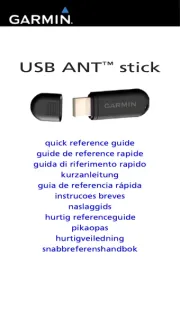
7 Mei 2025
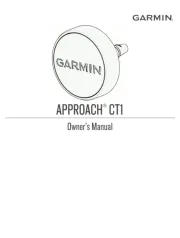
25 Februari 2025

9 Januari 2025

9 Januari 2025

14 December 2024

13 November 2024

2 Oktober 2024

23 Juli 2024

25 Juni 2024

9 Juli 2023
Handleiding Niet gecategoriseerd
- Powersoft
- Cramer
- Ibico
- Cigweld
- Best Service
- Ryobi
- Adviti
- Taga Harmony
- Hazet
- Impact
- Brabantia
- EA Elektro Automatik
- Feelworld
- Exelpet
- Pelgrim
Nieuwste handleidingen voor Niet gecategoriseerd

1 Augustus 2025
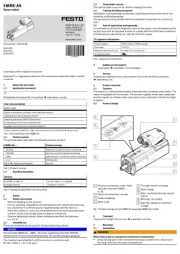
1 Augustus 2025
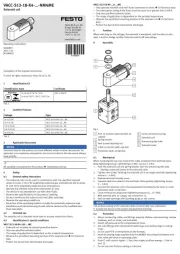
1 Augustus 2025
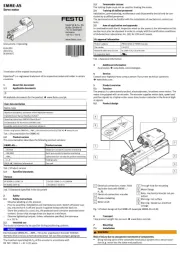
1 Augustus 2025
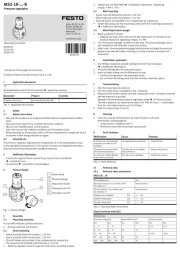
1 Augustus 2025

1 Augustus 2025
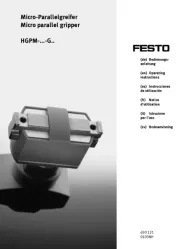
1 Augustus 2025
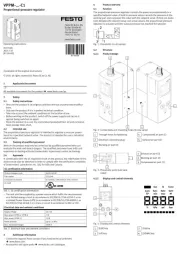
1 Augustus 2025
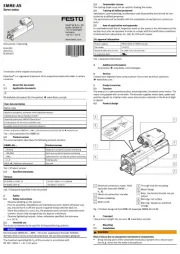
1 Augustus 2025

1 Augustus 2025